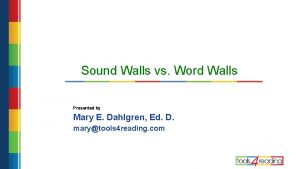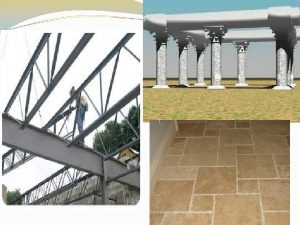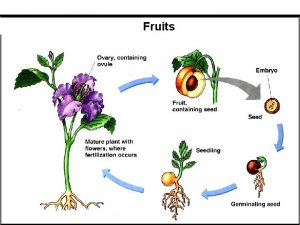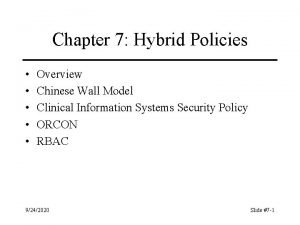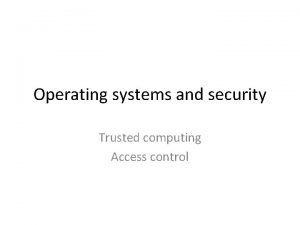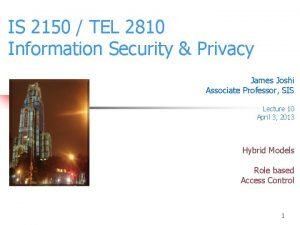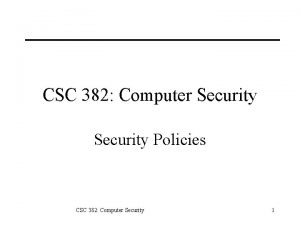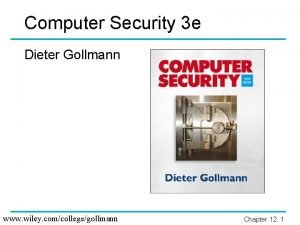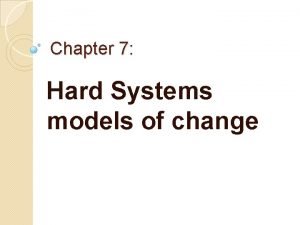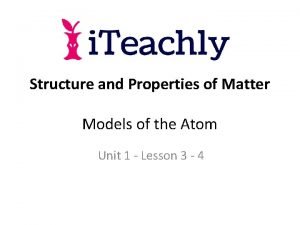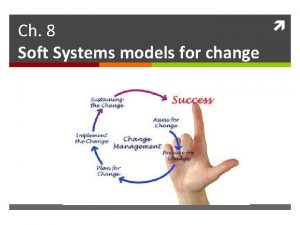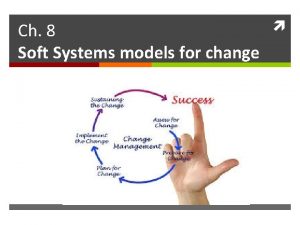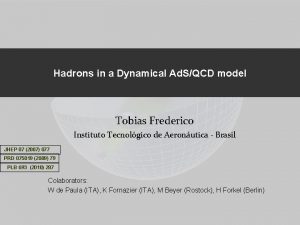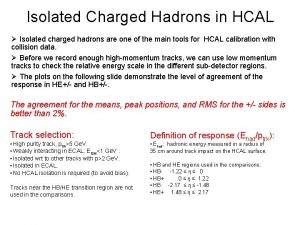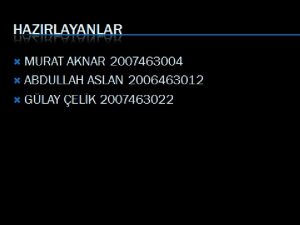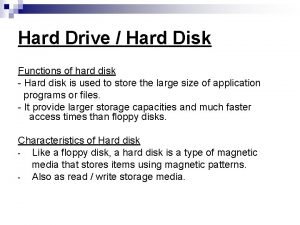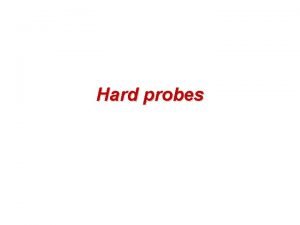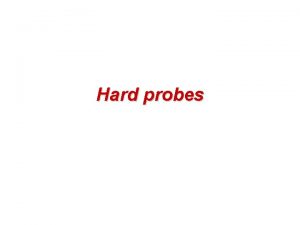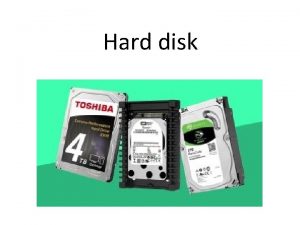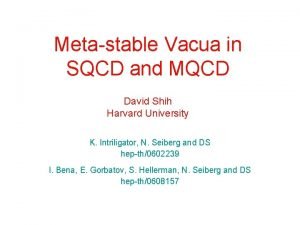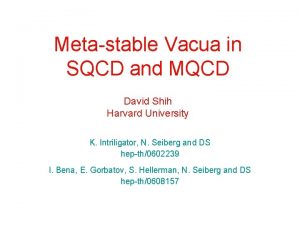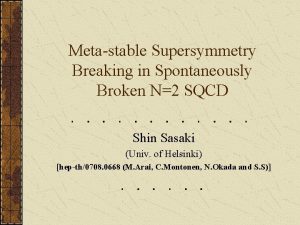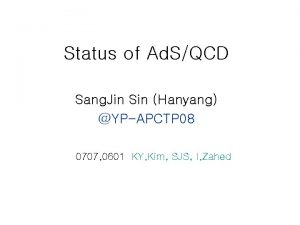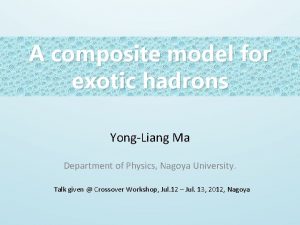Hadrons from a hard wall Ad SQCD model



















- Slides: 19

Hadrons from a hard wall Ad. S/QCD model Ulugbek Yakhshiev (Inha University & National University of Uzbekistan) Collaboration Hyun-Chul Kim (Inha University) Youngman Kim (APCTP) QNP 09, Beijing, 24. 09. 2009

Content 1. 2. 3. 4. 5. 6. Ad. S/QCD models Hard-Wall model Mesonic Sector Baryonic Sector Parameter restriction Results and Summary QNP 09, Beijing, 24. 09. 2009

Ad. S/QCD models Top-Down (From String Theory IIA) Ad. S/CFT duality is well understood [Sakai-Sugumoto, PTP 113] Bottom-Up (From Phenomenology) More freedom to build in properties of QCD One constructs 5 D dual model of QCD, taking into account the general futures of QCD (chiral symmetry breaking, VMD, Large N, solitons, …): • KK modes are identified with towers of radial excitations of QCD states; • It has some free input parameters which are fitted to experimental data; • There is a hope that one can get the model from more general theory. [Erlich et al. , PRL 95; Rold and Pomarol, NPB 721] QNP 09, Beijing, 24. 09. 2009

Bottom-Up approach Hard-Wall Compactification via Sharp IR Cut-off Soft-Wall Conformal Invariance is broken smoothly via Background Dilaton Field [Batell&Gherghetta, PRD 78; Colangelo et al. PRD 78] I. Mesonic sector – Input parameters are fixed according to mesonic data. II. Baryonic sector – Input parameters are fixed according to baryonic data. III. Unified approach – Input parameters should be fixed in unique way. In opposite case the integrals and wave functions will not be well defined. QNP 09, Beijing, 24. 09. 2009

The Model (Mesonic Sector) QNP 09, Beijing, 24. 09. 2009

QNP 09, Beijing, 24. 09. 2009

The Model (Mesonic Sector) One can find the expectation value of X defined as the classical solutions of field equations, using UV boundary conditions M Σ is quark mass matrix is chiral condensate While QCD is not conformal theory the values of M and Σ, in general, are free parameters of the model. QNP 09, Beijing, 24. 09. 2009

The Model (Mesonic Sector) Erlich et al. , PRL 95 M and Σ values are consistent with phenomenological values QNP 09, Beijing, 24. 09. 2009

The Model (Baryonic Sector) Effective Action where g is mass coupling. Using the expression for the scalar field X one solves equations for fermionic fields QNP 09, Beijing, 24. 09. 2009

The Model (Baryonic Sector) Decomposing 5 d Nucleons in terms of KK modes one gets equations where Φ(z) is expressed by expectation value of scalar field and mass coupling g and Δ‘s related to the five dimensional fermion mass. One also can introduce relation between different parity states and get the decoupled equation QNP 09, Beijing, 24. 09. 2009

The Model (Baryonic Sector) Introducing the new functions and looking for solutions of the type one can simplify the problem. QNP 09, Beijing, 24. 09. 2009

The problem It is a one dimensional potential well problem with the effective potential QNP 09, Beijing, 24. 09. 2009

Parameter fixing Mass coupling parameter is not fully free it is bounded in some region where QNP 09, Beijing, 24. 09. 2009

Parameter fixing Mass coupling parameter is not fully free it is bounded in some region Critical value of the parameter QNP 09, Beijing, 24. 09. 2009

Small mass coupling At the small mass coupling limit can be ignored and problem can be solved analytically. The solution has the form and baryon spectra equations presented by solutions of algebraic In this approximation the correct order of positive and negative parity state masses reproduced naturally QNP 09, Beijing, 24. 09. 2009

Hadron Spectra Input data fixed from mesonic sector and five dimensional mass also fixed QNP 09, Beijing, 24. 09. 2009

Hadron Spectra Input data from mesonic sector and five dimensional mass is free (due to the nonzero possible anomalous dimension coming from renormalization flow) to change Two different parameter sets are used to fix mesonic sector [Erlich et al. PRL 95 (2005)] A) Rho meson mass fixed B) General fit to experimental data g from minimization QNP 09, Beijing, 24. 09. 2009

Hadron Spectra Global fit to mesonic and nucleonic sectors in chiral limit. The five dimensional mass is set to zero due to the large possible anomalous dimension. The static properties are predicted within 10 to 20 % deviations from experiment. Couplings are underestimated! QNP 09, Beijing, 24. 09. 2009

Summary To improve results: v one can include higher dimensional operators v or consider finite UV cutoff v … Index is 3 for baryons and 0 for mesons Hard wall model is not good approximation… QNP 09, Beijing, 24. 09. 2009
 Hadrons
Hadrons Word wall vs sound wall
Word wall vs sound wall Wall to wall chris brown
Wall to wall chris brown Half brick wall in stretcher bond
Half brick wall in stretcher bond Members used to carry wall loads over wall openings
Members used to carry wall loads over wall openings The pod fruit develops from
The pod fruit develops from Gravimetric analysis of calcium and hard water
Gravimetric analysis of calcium and hard water Work hard have fun make history amazon
Work hard have fun make history amazon Hard times hard drive
Hard times hard drive Chinese wall model example
Chinese wall model example Brewer-nash model (chinese wall)
Brewer-nash model (chinese wall) Chinese wall model
Chinese wall model Chinese wall model
Chinese wall model Chinese wall model
Chinese wall model Computer security gollmann
Computer security gollmann Chinese wall model
Chinese wall model Hard system model of change
Hard system model of change Dalton hard sphere model
Dalton hard sphere model Hard and soft system model of change
Hard and soft system model of change Hard systems model of change
Hard systems model of change

